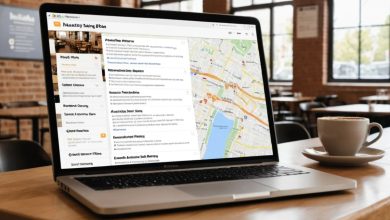Virtual Networking Events That Actually Build Relationships
Building meaningful professional connections remotely requires more than joining a random online meetup. With the right strategies, you can attend virtual networking events that foster genuine relationships—solutions that go beyond endless Zoom fatigue and superficial exchanges. In this article, you will discover what makes a virtual networking event effective, how to prepare, and best practices for both attending and hosting events that lead to long-lasting connections.
Understanding Virtual Networking Events
What Are Virtual Networking Events?
Virtual networking events are organized online gatherings designed to facilitate professional interactions and relationship-building among participants. They typically include live video sessions, interactive breakout rooms, and structured networking activities. These events allow attendees to meet peers, mentors, and industry experts without geographical constraints.
-
Live video sessions with keynote presenters or panel discussions
-
Breakout rooms for small-group or one-on-one conversations
-
Interactive elements such as polls, Q&A, and chat channels
-
Pre- or post-event networking lounges for informal breakout sessions
Why Virtual Networking Matters for Professionals
Virtual networking democratizes access to professional circles, enabling you to connect with experts, peers, and potential collaborators around the world. By participating in online events, you tap into:
-
Broader geographic reach: Connect with professionals across multiple time zones without travel costs.
-
Flexibility: Join from any location, making it easier to fit networking into a busy schedule.
-
Specialized communities: Engage directly with niche groups, from tech startups to creative industries.
-
Cost efficiency: Attend virtual conferences or meetups often at lower ticket prices or even for free.
For example, a marketer based in São Paulo might join a virtual meetup hosted by a Silicon Valley accelerator, forging relationships that would otherwise be difficult due to distance and expense.
Identifying Your Networking Goals
Networking without a purpose often results in superficial interactions. To make each virtual event count, follow these steps to set SMART goals:
-
Define desired outcomes: Identify whether you want mentorship, new job leads, or collaborative partners.
-
Select relevant industries or niches: Focus on communities that align with your career path (e.g., digital marketing, UX design, software development).
-
Establish a timeline: Aim to attend specific events over the next quarter and follow up with at least five new contacts per event.
-
Outline action items: Determine what follow-up actions you will take (e.g., scheduling informational interviews, sharing relevant resources, connecting on LinkedIn).
By clarifying your objectives—such as scheduling two informational interviews within one month or connecting with three potential mentors—you transform each virtual networking event into a strategic step toward your career goals.
Types of Virtual Networking Events
Webinars with Interactive Q&A
Webinars offer expert-led presentations followed by real-time Q&A sessions, making them ideal for gaining insights and asking pointed questions.
-
Advantages
-
Direct access to thought leaders or subject-matter experts
-
Opportunities to pose specific questions that showcase your expertise
-
Ability to observe other attendees’ questions, sparking ideas for future interactions
-
-
How to Ask Impactful Questions
-
Research the Speaker: Review their recent articles or LinkedIn posts to tailor your question.
-
Be Concise: Frame your question in one or two sentences, focusing on a unique aspect of the topic.
-
Mention Context: Briefly explain your background or challenge to make your question more relevant (e.g., “As a mid-level UX designer struggling with remote user testing…”).
-
By preparing a well-crafted question, you stand out in the Q&A session and increase the likelihood that others will seek you out afterward.
Structured Speed Networking Sessions
Speed networking replicates the concept of speed dating: one-on-one interactions with a specific time limit. These sessions quickly expose you to multiple professionals in a short period.
| Format | Pros | Cons | Ideal Use Case |
|---|---|---|---|
| 1:1 Speed Networking | Rapid introductions, high connection volume | Brief interactions, pressure for first impressions | Early career professionals seeking multiple contacts |
| Small Group Roundtables | Deeper discussions, varied perspectives | Fewer new faces per event | Niche topics requiring rich dialogue |
| Informal Virtual Mixers | Relaxed setting, natural conversation flow | Potential for off-topic tangents | Casual relationship-building and social bonding |
Speed networking works best if you arrive with an elevator pitch and a list of three questions to guide each brief conversation. For example, “What recent project are you most excited about?” or “Which technologies do you see transforming our industry next year?”
Themed Virtual Conferences & Summits
Themed conferences and summits focus on specific industries, skills, or topics, often spanning multiple days. They tend to include keynote sessions, panel discussions, breakout workshops, and virtual expo halls.
-
Common themes:
-
Industry-specific gatherings (e.g., “Global Fintech Summit”)
-
Skill-focused workshops (e.g., “Mastering Data-Driven Marketing”)
-
Regional or community-centered events (e.g., “Latin American Creative Tech Summit”)
-
-
How to Navigate a Virtual Expo Hall
-
Identify Key Exhibitors: Review the exhibitor list in advance to target companies or organizations of interest.
-
Schedule Booth Visits: Block time on your calendar to join live demos or chat with company representatives.
-
Collect Digital Collateral: Download whitepapers or brochures and note any companies that align with your goals.
-
Follow Up: Exchange contact details via chat, then reach out with personalized messages referencing your conversation.
-
By treating the virtual expo hall as you would a physical one—focused on research, engagement, and follow-up—you can maximize lead generation and relationship-building.
Online Mastermind or Accountability Groups
Mastermind groups are small, curated cohorts of professionals who meet regularly to discuss challenges, share strategies, and hold each other accountable. These groups often operate on recurring schedules (weekly or monthly) and follow a structured format.
-
Key features:
-
Member Introductions: Each participant shares recent wins, pain points, and goals.
-
Rotating Moderators: A different member leads each session, ensuring diverse perspectives.
-
Action-Item Follow-Ups: Participants report back on progress from previous meetings, fostering accountability.
-
For instance, a cohort of freelance writers might meet biweekly, dedicating 20 minutes to individual project updates, 30 minutes to a group brainstorming session, and 10 minutes to set next steps. Over time, these small, consistent interactions cultivate trust and deep professional bonds.
Choosing the Right Virtual Networking Platform
Built-In Networking Features vs. Third-Party Tools
When selecting a platform to host or attend networking events, consider whether built-in features meet your needs or if you require specialized third-party integrations.
-
Platform A (example):
-
Integrated breakout rooms for one-on-one or small group conversations
-
Profile directories allowing attendees to search peers by industry or role
-
AI-powered matchmaking suggesting relevant connections based on interests
-
-
Platform B (example):
-
Chat lounges and topic-based channels for informal discussions
-
Customizable email templates to send reminders and follow-up messages
-
Integration with CRM tools for tracking new contacts
-
Pros & Cons
-
Platforms with robust native tools minimize setup time but may have steeper learning curves.
-
Third-party tools (polling apps, dedicated chat services) add functionality but require additional configuration and possible extra costs.
Criteria for Platform Selection
To ensure a smooth networking experience, evaluate platforms based on these criteria:
-
Ease of Use: The interface should be intuitive for both hosts and attendees, with clear instructions for joining meetings and navigating features.
-
Video/Audio Quality: Reliable, high-definition streams reduce fatigue and ensure clear communication.
-
Filtering Capabilities: Options to sort attendees by role, location, or industry make targeted networking efficient.
-
Calendar Integration: One-click calendar invites (Google Calendar, Outlook) help participants schedule sessions and avoid conflicts.
-
Data Privacy & Security: Ensure the platform complies with relevant regulations (e.g., GDPR, CCPA) to protect attendee information.
By scoring each platform against these criteria—using a simple scale of 1 to 5—you can objectively select the tool that best aligns with your event objectives.
Preparing to Attend a Virtual Networking Event
Crafting a Standout Digital Profile
A well-crafted digital profile signals professionalism and sets the stage for deeper conversations. Follow these guidelines:
-
Profile Photo: Use a high-resolution, recent headshot with a neutral background and professional attire.
-
Headline & Bio: Write a concise headline that includes your role and one key achievement (e.g., “Marketing Strategist Driving 30% Growth Through Data-Driven Campaigns”). In your bio, mention your expertise and what you hope to learn or contribute at networking events.
-
Key Skills: List three to five core competencies—such as “virtual networking,” “digital advertising,” or “user experience design.”
-
Contact Information: Provide at least one reliable method of contact (email or LinkedIn URL) so attendees can easily connect post-event.
By optimizing your profile around the focus keyword “virtual networking events,” you increase your visibility when attendees search attendee lists or directories.
Pre-Event Research & Planning
Going into an event with a clear plan maximizes your chances of forming meaningful connections.
-
Review the Attendee List: If available, identify 3–5 individuals you want to connect with—such as speakers, panelists, or influencers in your niche.
-
Prepare Tailored Conversation Starters: Draft at least three questions or comments tailored to each key person. For instance:
-
“I read your latest article on remote UX testing—what tools do you recommend for gathering user feedback virtually?”
-
“I noticed you lead a content marketing team—how do you balance brand voice across global markets?”
-
-
Test Technology Setup: Verify your camera, microphone, and internet speed at least 24 hours before the event to avoid last-minute technical glitches.
By entering the event with a list of specific targets and conversation prompts, you position yourself as prepared and genuinely interested.
Setting Up Your Virtual Environment
A distraction-free, professional virtual environment encourages focused conversations.
-
Background & Lighting: Choose a tidy, neutral background with soft, natural light or a quality ring light aimed at your face. Avoid harsh backlighting that can cast a shadow.
-
Minimize Background Noise: Use a noise-canceling headset or earphones with a built-in mic. Mute notifications on other devices and close unnecessary applications.
-
Digital Note-Taking: Keep a simple spreadsheet or note-taking app open to jot down key points, names, and follow-up tasks in real time. Include columns for Name | Role | Event | Key Takeaway | Next Action.
By optimizing your environment, you convey professionalism and ensure you stay present throughout each session.
Best Practices for Building Genuine Relationships
Engaging Effectively in Breakout Rooms
Breakout rooms offer intimate settings for deeper discussions. Follow these steps to make each interaction count:
-
Icebreaker Questions: Prepare three open-ended icebreakers such as:
-
“What inspired you to attend this event?”
-
“Which session topic resonated most with you so far?”
-
“What challenges are you currently facing in your role?”
-
-
Active Listening: Show engagement by paraphrasing what others say, nodding to indicate understanding, and asking follow-up questions. For example, “It sounds like you’re exploring new marketing automation tools—what features are most important to you?”
-
Transition to Next Steps: Conclude by exchanging contact details (e.g., “Can I send you a quick LinkedIn invite?”) and setting expectations for follow-up:
-
“I’ll share that whitepaper on virtual user surveys we discussed, and perhaps we can schedule a 15-minute call next week.”
-
By balancing curiosity with concise storytelling about your own work, you encourage reciprocity and make your breakout sessions memorable.
Leveraging Chat Features and Polls
Chat channels and live polls allow you to engage without interrupting the speaker or panelists.
-
Strategic Chat Usage:
-
Share a relevant resource or article link when it directly addresses the current discussion topic.
-
Compliment a speaker’s insight and ask a follow-up question in the chat (e.g., “Great point on AI-driven marketing. Do you see any emerging tools that cater specifically to small businesses?”).
-
Message other attendees privately to suggest a one-on-one discussion after the main session.
-
-
Participating in Polls:
-
Answer poll questions honestly to demonstrate active engagement.
-
Use poll results as conversation starters in breakout sessions (“I noticed that 75% of attendees struggle with remote team collaboration—how do you tackle that challenge in your organization?”).
-
By weaving in thoughtful chat contributions and poll participation, you showcase expertise and signal readiness to connect more deeply.
Following Up Immediately Post-Event
Your initial outreach after the event sets the tone for future communication.
-
Send Personalized Messages Within 24–48 Hours
-
Reference a specific detail from your conversation: “I enjoyed discussing remote onboarding best practices—thank you for sharing your approach to virtual mentorship.”
-
Offer to share a resource or mutual connection: “I’d like to introduce you to a colleague who recently implemented a similar process in their organization.”
-
-
Connect on Professional Networks
-
Send a LinkedIn request with a brief note tying back to your conversation: “Hi [Name], it was great meeting you in the breakout room at the Virtual Growth Summit. I’d love to stay in touch and continue our discussion about marketing automation.”
-
-
Log Details in Your Tracking Sheet
-
Columns: Name | Platform/Event | Date Met | Key Takeaway | Next Action | Follow-Up Date
-
Schedule reminders for the next follow-up—ideally within two weeks—to sustain momentum and demonstrate genuine interest.
-
By promptly following up with personalized notes and clear next steps, you stand out from the crowd and lay the foundation for lasting professional relationships.
Hosting Your Own Virtual Networking Event
Defining the Format & Agenda
Organizing your own event positions you as a community builder and draws professionals who value your leadership.
-
Choose a Clear Theme
-
Example: “Quarterly UX Designers Roundtable” or “Remote Marketing Leadership Forum.”
-
Make the theme specific to a niche audience to attract participants who can connect at a deeper level.
-
-
Outline a Structured Agenda
-
Introduction (10 minutes): Brief welcome, host overview, and icebreaker activity.
-
Main Discussion (30 minutes): Panel or case study presentation, followed by Q&A.
-
Speed Networking (20 minutes): Timed one-on-one or small-group breakout sessions with a three-minute timer per interaction.
-
Open Q&A (15 minutes): Attendees submit questions via chat or voice.
-
-
Assign Moderators or Facilitators
-
Designate a moderator for each segment to keep discussions on track and manage time.
-
Ensure all participants have clear instructions on how to join breakout rooms and where to find resources.
-
A well-defined agenda helps attendees know what to expect and encourages participation, resulting in more engaging and productive networking.
Promoting Your Event for Maximum Engagement
To fill seats (and breakouts), you must reach the right audience with a compelling message.
-
Craft an Attention-Grabbing Title and Description
-
Use long-tail keywords such as “Best Virtual Networking Events for UX Designers” or “Online Marketing Mastermind for CMO Aspirants.”
-
Clearly state the event’s benefit: “Learn cutting-edge design trends while connecting with industry leaders.”
-
-
Share Across Relevant Channels
-
Post in LinkedIn groups, Slack communities, or Discord servers where your target audience is active.
-
Email your professional network with personalized invitations: “Hi [Name], given your expertise in mobile UX, I’d love to invite you to our upcoming Virtual UX Roundtable.”
-
-
Encourage Pre-Event Interaction
-
Ask registrants to submit questions or topics in advance—this ensures the main discussion addresses real challenges.
-
Create a dedicated chat channel or social media hashtag (#UXRoundtableMay2025) to foster discussion before the event begins.
-
By clearly communicating the event’s focus, benefits, and interactive elements, you attract attendees who are genuinely interested in relationship-building rather than passive listening.
Tools & Technology Checklist
A seamless technical setup minimizes friction and keeps attendees engaged.
-
Video-Conferencing Platform with Breakout Rooms
-
Ensure the chosen platform supports timed breakout sessions and easy rejoining.
-
-
Polling or Q&A Plugin
-
Tools like Slido or Mentimeter let attendees vote on topics and submit questions anonymously.
-
-
Calendar Invites with Integration
-
Provide one-click invites for Google Calendar and Outlook to reduce scheduling conflicts.
-
-
Automated Reminder Emails
-
Send reminders 24 hours and one hour before the event, including login details and any preparatory materials.
-
-
Backup Plans
-
Have a co-host or technical support person on standby in case of connectivity issues or attendee questions.
-
By double-checking your technology stack and having contingency plans ready, you ensure a professional experience that encourages repeat attendance and word-of-mouth referrals.
Measuring Success & Iterating
Key Metrics to Track
Collecting data on event performance helps you refine future sessions and demonstrate value.
-
Number of New Qualified Contacts Made
-
Track attendees who requested follow-up or reciprocated connection requests on professional networks.
-
-
Response Rate to Follow-Up Messages
-
Measure how many personalized messages received replies within one week.
-
-
Repeat Attendance
-
Note how many participants register for subsequent events—high retention indicates strong community engagement.
-
-
Engagement Metrics
-
Count chat messages, poll participation, and survey completions during and after the event.
-
By monitoring these key performance indicators (KPIs), you gain insight into which elements resonate most with your audience and where adjustments are necessary.
Collecting Attendee Feedback
Attendee feedback provides qualitative context to your metrics and reveals areas for improvement.
-
Create a Brief Post-Event Survey
-
Include 3–5 targeted questions such as:
-
“On a scale of 1–5, how valuable was the breakout session?”
-
“What topic would you like to see covered next?”
-
“How satisfied were you with the networking opportunities?”
-
-
-
Incentivize Completions
-
Offer a summary report, whitepaper, or recording of the event to those who complete the survey.
-
-
Analyze Results
-
Identify patterns—if multiple attendees request longer breakout sessions, adjust the agenda next time.
-
Look for suggestions on technology, format, or topics that can inform future planning.
-
Systematically gathering and reviewing feedback ensures that your events evolve to meet attendee needs and maintain high levels of engagement.
Continuous Improvement Loop
To build a thriving virtual networking community, adopt a mindset of ongoing iteration.
-
Review Feedback and Data Quarterly
-
Compare attendance trends and engagement metrics across multiple events.
-
Identify at least three actionable improvements for the next event (e.g., shorter presentations, more specialized roundtables, improved tech support).
-
-
Adjust Event Formats
-
Experiment with different breakout sizes—test one-on-one speed networking versus small-group discussions of four to six attendees.
-
Vary session lengths to find the sweet spot that balances depth and energy.
-
-
Experiment with Themes and Audiences
-
Rotate topics each quarter to appeal to diverse segments within your target community.
-
Trial collaborations with complementary organizations to expand reach and bring fresh perspectives.
-
By treating each event as a learning opportunity and continuously refining your approach, you demonstrate responsiveness to attendee preferences and build a reputation for high-quality virtual networking experiences.
Frequently Asked Questions (FAQs)
What Makes a Virtual Networking Event Effective?
-
Structured breakout sessions for one-on-one or small-group conversations
-
A clear agenda with dedicated networking segments (e.g., speed networking, informal lounges)
-
Interactive features like live polls, Q&A panels, and moderated chat channels to keep participants engaged
How Can I Stand Out in a Virtual Networking Room?
-
Prepare and deliver a concise elevator pitch that highlights your expertise and interests
-
Engage actively in chat by asking thoughtful questions or sharing relevant resources
-
Volunteer to follow up with a useful article, tool, or introduction after the session to demonstrate genuine value
How Often Should I Attend Virtual Networking Events?
Aim to attend 1–2 quality events per month, focusing on those that align closely with your professional goals. Consistent participation in a few well-chosen communities is more effective than sporadic attendance at many general events.
Are Paid Virtual Networking Events Worth It?
-
Paid events often offer curated attendee lists, higher-quality speakers, and more structured networking activities.
-
Free events can be more accessible and attract a broader audience but may lack targeted networking opportunities.
-
Consider your budget and objectives: if you need to connect with decision-makers or niche experts, investing in a reputable paid event can yield stronger relationships.
Conclusion
Virtual networking events can be powerful catalysts for career growth—if you approach them with intention, preparation, and follow-through. By understanding the variety of event formats, choosing the right platforms, and crafting standout digital profiles, you position yourself to make meaningful connections. As you engage in breakout sessions, leverage chat features, and follow up promptly, you transform initial interactions into lasting professional relationships. Whether you attend or host events, continuous measurement and iteration ensure that each gathering becomes more effective. Start applying these strategies today, and experience how well-designed virtual networking events can expand your network and elevate your career.
Published on: 4 de June de 2025








